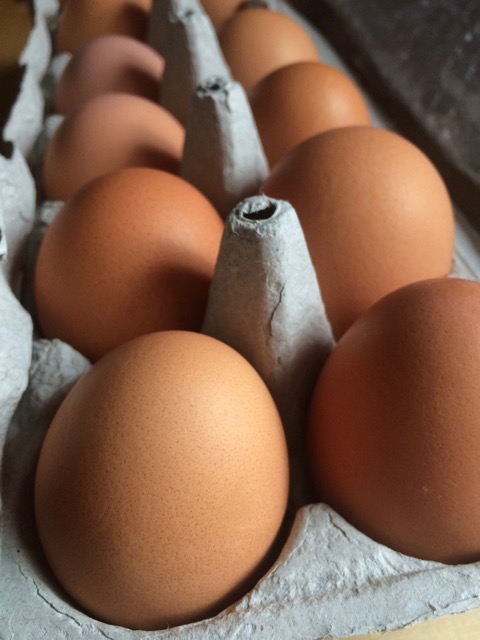Where do Eggs Come From?
Where do eggs come from? What do all of those labels like cage free, free range and organic mean? In honor of National Egg month Lara Durben, Communications Director for the Minnesota Turkey Growers Association, Chicken and Egg Association of Minnesota and the Midwest Poultry Federation answers these questions!

By Lara Durben, Communications Director for the Minnesota Turkey Growers Association, Chicken and Egg Association of Minnesota and the Midwest Poultry Federation
Where do eggs come from?
Peruse the egg choices in your local grocery store and I can see how you might get a little confused. Eggs come from many different kinds of farms.
Free range. Natural. Organic. Brown eggs. White eggs. Vegetarian diet. Pasture-raised. Conventionally-raised eggs. Hormone-free.
So many labels and marketing terms, but what do they all mean? Are there differences between eggs that come from hens raised in different ways? Or is an egg simply an egg?
The easy answer for me is actually quite simple: an egg truly is an egg, nutritionally, no matter the breed of chicken or type of housing provided for the hens. In fact, on my own blog I recently compared the nutritional content of a dozen white eggs that came from conventionally-raised laying hens in caged systems with animal husbandry practices certified by the United Egg Producers versus brown eggs from a free range flock, also Certified Humane and Non-GMO Project Verified.
Guess what? All the nutritional components were identical! The only differences were the price - $1.99 for the conventional eggs versus $5.99 for the free range eggs – and the color of the eggs themselves.
Based on where eggs come from some variations may occur, of course. For instance, hens that are supplemented with flaxseed will produce eggs with more omega-3’s. Hens that are given Beta-carotene – a red-orange pigment found in plants like marigolds and vegetables like carrots - will lay eggs that have a darker yellow yolk color. But the basic array of essential nutrients, vitamins, and protein are the same for all eggs. In other words, an egg is an egg is an egg. Really!
Here are a few other labels that can be misleading unless you know the facts:
Vegetarian Diet
Some companies choose to feed their hens only grains, as some consumers have expressed a preference for this. However, I think it’s important to remember that chickens are naturally omnivores – they eat meat! - so many farmers supplement their chicken feed with proteins, fats, and oils from animal by-products because it’s good for their chickens.
Hormone-Free
All eggs (and poultry meat, for that matter) are free of any added hormones or steroids because it’s illegal to add these into a bird’s diet. In fact, it’s been illegal since the 1950s so this is a very persistent myth that continues to be perpetuated entirely way too much!
Antibiotic-Free
Egg that come from laying hens rarely receive antibiotics, thanks to the effectiveness of vaccines and on-farm disease prevention. If antibiotics are used to treat a disease, the farmer must comply with FDA guidelines and typically administers the antibiotic under the guidance of a veterinarian. Eggs can only be labeled antibiotic-free if egg farmers choose not use any antibiotics as young hens are growing or when hens are laying eggs.
Organic
Certified organic eggs must meet very strict qualifications by U.S. Department of Agriculture to have this label. An organic egg labeled as such doesn’t mean the nutritional value is any different than an egg produced by a conventionally-raised hen.
Part of the confusion about egg labels is that they often refer to a specific method of production, or “housing system,” for laying hens. Let’s take a look at the most popular hen housing systems in the U.S.:
Conventional Cages
The vast majority of laying hens in the U.S. are raised indoors in conventional cages, designed to keep birds safe from both the elements outside (inclement weather, extreme temperatures, and predators) and from each other.
Have you ever heard of “pecking order”? This comes from chickens, which can be very territorial and downright mean to each other. Researchers found years ago that keeping hens in small groups in cages helps curb that behavior.
The cages themselves house approximately 6 birds apiece and hens have daily access to fresh food and water. A manure belt below the cages keep manure away from the birds – and also away from the eggs they lay. Once an egg is laid, it rolls down and away from the hens to an egg collection belt.
Enriched Colony
This type of housing – also indoors for the same reasons as noted above – is sort of a hybrid in between cages and completely cage-free. It allows for larger cages, perhaps 60 hens per cage, depending on the system. There is enough space for the hens to stand, sit, turn around, and extend their wings. Enriched colony housing also allows for natural bird behaviors such as perching, scratching, dust bathing, and nesting.
Like conventional cages, hens have daily access to fresh food and water, and the manure and egg laying is handled the same way – via mechanical belts.
Cage-Free Aviary
This indoor system is entirely cage-free – hens are allowed to roam freely within the barn and there are multiple levels for hens to perform natural bird behaviors such as perching, scratching, dust bathing, and nesting.
The manure management and egg collecting is much more labor-intensive in these systems since the birds have free reign around the barn.
Free Range
Free range eggs come from hens that have some access to the outdoors. There are no specific guidelines for free range egg production.
Pasture-Raised
Pasture-raised hens are typically raised outdoors year-round, usually with some housing where they can go inside at night to protect themselves from predators or inclement weather. Like free range production, there are no specific guidelines for pasture-raised flocks.

Not one of these systems is inherently better than another. Some farmers prefer one system over another; it depends entirely on their farm and the consumer market they are trying to reach.
The Coalition for a Sustainable Egg Supply comprehensively studied three of these hen housing systems – cages, enriched colony, and cage-free – over a period of three years. The research found there are positive and negative impacts and trade-offs associated with each of these systems. For instance: cage-free and enriched colony housing allow for more space to display natural behaviors, but also can mean more aggression between hens and higher mortality rates. Conventional cages don’t give the hens as much room to move around but mortality and aggression is much lower and the eggs stay clear of the manure.
To me, all of this talk about where eggs come from, egg labeling, and housing systems revolves around choice. When you walk up to the egg section of your grocery store, you have many choices. This may be confusing until you know the facts, but it certainly should never feel like a guilt-trip trying to buy eggs for your family.
You can feel good about wheverever your eggs come from and whatever eggs you choose – at whatever price works for your budget.
You can feel good knowing that America’s egg farmers prioritize bird health and food safety in all that they do, day in and day out on the farm.
You can feel good knowing that an egg truly is an egg, regardless of breed of the chicken, color of the shell, or what type of production system used by the farmer.
You can feel good knowing that all eggs are 70-calorie powerhouses of protein with vital nutrients such as lutein, folate, and 13 essential vitamins and minerals.
And that, friends, is why eggs are incredible!
Helpful Links to learn about where eggs come from:
Center for Sustainable Egg Supply
U.S. Poultry and Egg Association
Want more info on poultry and where eggs come from? Check out our Poultry Ag Mag!
Lara Durben grew up on a corn and soybean farm near Hector, Minnesota and wanted nothing more than to leave that small town at age 18, get her journalism degree in the big city of Minneapolis and take that wherever it would lead her.
A surprising thing happened along the way. Her degree and experience led her happily back to agriculture and for the past 20 years, she has talked turkey (and chicken) as the Communications Director for the Minnesota Turkey Growers Association, Chicken and Egg Association of Minnesota and the Midwest Poultry Federation. And she loves it!
She lives in Buffalo, Minnesota – part small town, part suburbia – with her husband, their son, and a senior citizen pug dog, Earl. She is a little obsessed with shoes, likes to get her hands dirty in her gardens, admittedly watches too much HGTV, and is a self-proclaimed baking queen and travel junkie. You can read more on her blog: www.MyOtherMoreExcitingSelf.com.









